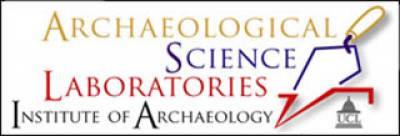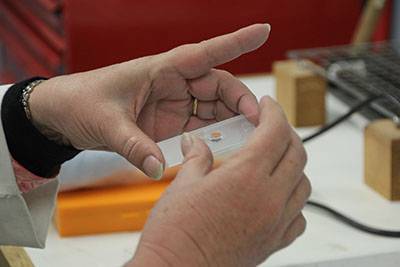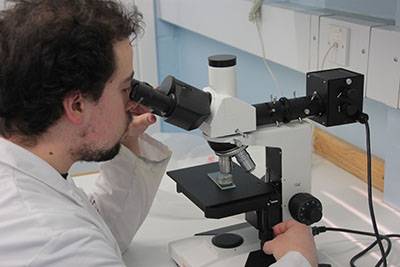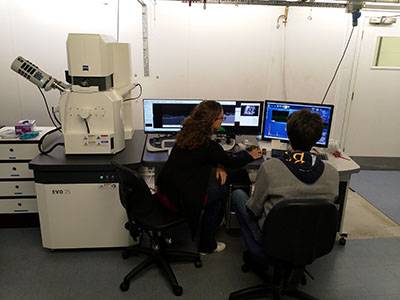
The Institute is well equipped with extensive laboratory facilities, in particular the Wolfson Archaeological Science Laboratories, which were opened in 1991, extensively refurbished in 2004 and extended in recent years. These laboratories provide excellent facilities for the examination and analysis of a wide variety of archaeological materials. They form a collection of labs that is unparalleled in science-based archaeology within the UK and Europe.
Almost all types of archaeological materials, artefacts and finds, both organic and inorganic, can be studied here. The labs provide tools to process material from the initial stages of sample taking (selecting, cleaning, drilling, cutting, and scraping), through sample preparation (thin-sectioning, mounting in resin, polishing, etching, grinding, and milling), to various kinds of examination and analysis (optical and electron microscopy, bulk and micro chemical analyses by XRF, SEM-EDS and EPMA, X-ray photography, ion chromatography, and infrared spectrometry).
The wide range of equipment allows for both non-destructive and destructive analyses of material, depending on the information sought and the nature of the sample.
Facilities

The Preparation Labs present a large range of tools, allowing various preparation strategies needed for sample examination and analysis. Different saws, various types of grinding, milling and polishing equipment, thin-sectioning and resin-mounting tools, normal and micro drills, as well as wet and dry sieving, scraping and abrasion tools can be found here.
The SEM Suite comprises Scanning Electron Microscopes and Electron Microprobes which allow micro-chemical analysis of minute areas or phases of many types of objects or samples, and can be used for electron microscopy and digital imaging of these areas as well. A Gatan MonoCL Spectrometer facilitates visualising the distribution of trace elements and certain crystal structures in many common mineral phases in archaeological ceramics, such as quartz or zircon. This lab also houses a digital X-Ray imaging machine, which allows the non-destructive imaging of the internal macro-structure of samples. The Institute owns hand-held portable XRF instruments for world-wide use in museums and the field, with special calibration programmes for alloys and ceramics.


In the two Microscopy Labs a range of optical microscopes is available, including stereoscopic light microscopes for detailed examination of small objects such as seeds and teeth, and petrologic and metallurgical microscopes with digitising equipment for image analysis.
The Furnace Lab hosts different furnaces for metal and glass melting, loss-on-ignition investigations as well as sample drying.
The Sedimentology Lab has facilities for processing, analysis and storage of core and bulk sediment samples. The lab is used for teaching and research on Paleolandscape and Paleoenvironmental reconstruction. There is equipment for grain-size analysis and testing of the physical and chemical properties of soils and sediments. We also conduct phytolith analyses on sediments from archaeological sites for information on agricultural practises, environmental reconstruction and plant use in antiquity.
Enquiries: Russell Bailey, Senior Technician in Scanning Electron Microscopy and X-ray Microanalysis
 Close
Close

